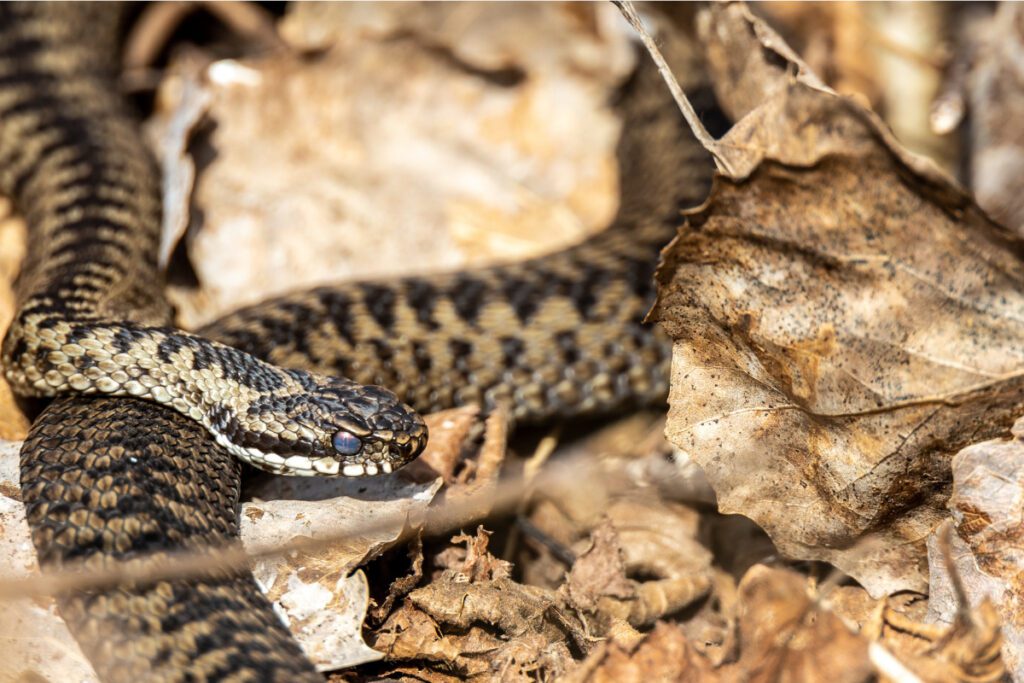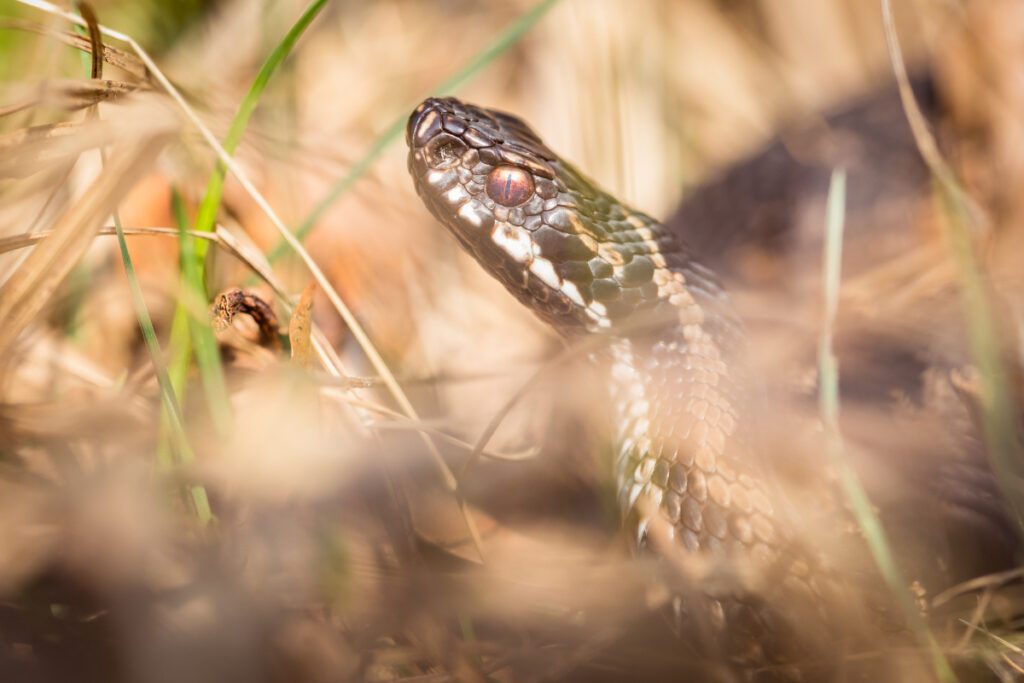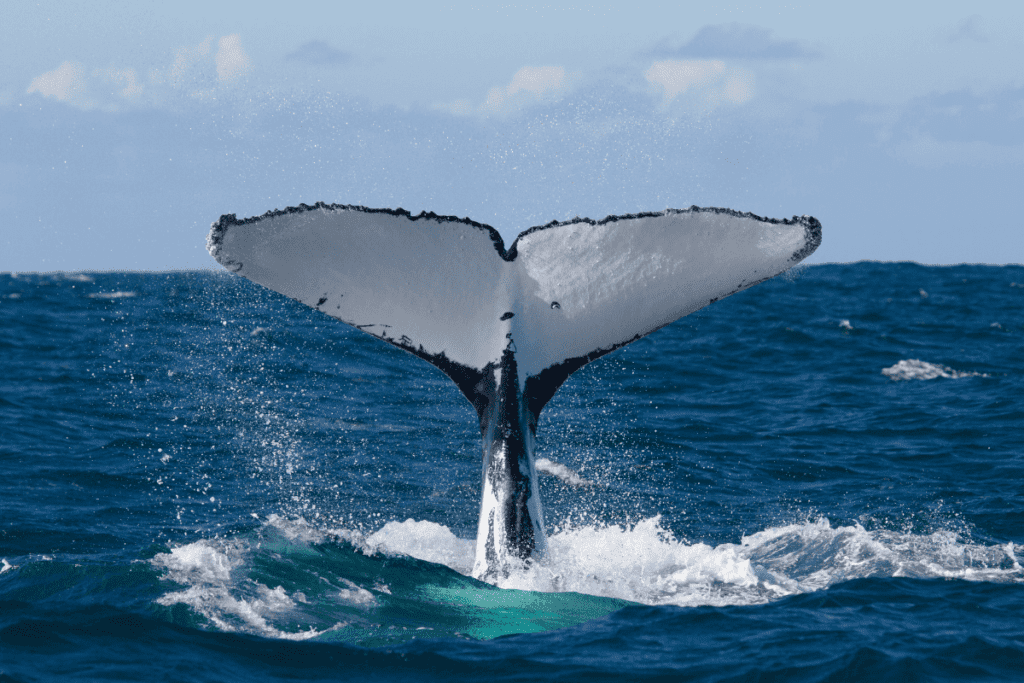When and Where to See Adders in Cornwall
Cornwall’s Adder Season
Adders (Vipera berus), the UK’s only venomous snake, can be spotted across Cornwall from early spring to late autumn. Peak activity occurs between March and October, with the summer months being particularly busy for adder spotters. As cold-blooded reptiles, adders become active when temperatures rise, so sightings are most likely on warm days during a spell of sunshine or a warm weather period.
In Cornwall, you’re especially likely to have an adder encounter when the weather is sunny or overcast, as adders bask in the sun to raise their body temperature. Adders are most active during the warm spell of early spring, when they emerge from hibernation, and are also more visible during hazy sunshine or warm weather in the summer.
Best Habitats for Spotting Adders in Cornwall
Adders thrive in classic adder habitats like heathlands, moorlands, and coastal paths, making these the best places for spotting them in Cornwall. They favour undisturbed areas that provide both cover and basking spots, such as coastal cliffs, rough grasslands, and woodland clearings. These areas offer dry, open spaces for thermoregulation, as well as rocks or dense vegetation where they can hide from predators and extreme weather.
In Cornwall, well-known spots include areas around Lands End and Kit Hill, where adders are often found. Adders are less likely to be found in intensively farmed or heavily developed areas, preferring natural environments where they hunt small mammals, birds, and lizards.
Safety Precautions: Understanding Adder Bites
Are Adder Bites Dangerous?
Adder bites are venomous, but they are rarely dangerous to humans. Most bites occur when people accidentally step on an adder or provoke it, as adders are generally shy and prefer to avoid humans. In the UK, bites from adders are uncommon, and fatalities from adder venom are extremely rare, especially when medical attention is sought promptly.
The risk of adder bites is higher during warm weather or a warm spell when the snakes are more active, but most bites result in painful swelling, bruising, and nausea, rather than anything more severe. Adders use their venom primarily to subdue small prey, such as rodents and lizards. If an adder bites, it’s important to seek medical attention, as sometimes the bite can require a few days in the hospital.
Safety Tips for Wildlife Watchers in Cornwall
To avoid the risk of adder bites, be aware of your surroundings when walking in areas where adders are known to live. Stick to well-trodden paths, especially in areas like coastal cliffs or moorland walks, where adders might be hiding in long grass or undergrowth. Wear sturdy boots and long trousers. If you spot an adder, stay calm and keep your distance; never try to touch or disturb the snake. Keep dogs on a lead, particularly in well-known adder habitats such as those along the coastal path, to avoid a potential bite.
How to Identify Adders in Cornwall
Distinctive Features of Cornwall’s Adders

Adders are relatively small snakes, growing to about 60–80 cm in length. They’re easily recognised by the dark zigzag pattern running along their back and the distinctive V-shaped marking on the top of their head. Males are usually grey with black markings, while females are more brown or reddish with dark brown patterns.
Some, called melanistic adders, are almost entirely black, though the zigzag can still be faintly seen. Unlike grass snakes or smooth snakes, adders have a stockier build and slit-shaped pupils; a key feature that sets them apart from other types of snake in the UK.
The Secret Life of Adders: Reproduction and Behaviour
Adder Mating and Birth in Cornwall
In Cornwall, adder reproduction begins in early spring after hibernation. Males emerge first and engage in dramatic “adder dances,” where they compete by intertwining their bodies and trying to push each other to the ground to win the female’s attention. Mating occurs between April and May, and female adders give birth to live young, rather than laying eggs.
After a gestation period of three to four months, the female adder will give birth to between 5 and 20 young in late summer, usually between August and September. These newborns are independent from birth and will quickly disperse to find food and shelter. Female adders don’t breed every year, as reproduction is energetically demanding and depends on food availability.
Conservation: Why Adders in Cornwall Need Our Help
Declining Numbers of Adders in Cornwall and the UK
Adders in Cornwall, like elsewhere in the UK, are facing a decline in numbers. Research shows that 90% of adder populations are in decline, making the risk of extinction a real concern. Without intervention, adders could be confined to just a few locations in the next 10 to 20 years. This is why adder spotters and wildlife enthusiasts need to get involved and help conserve their habitats.

Threats to the Adder Population in Cornwall
The key threats to the adder population in Cornwall include habitat loss, human disturbance, and persecution. Due to misconceptions about their behaviour, Adders are often misunderstood and deliberately harmed. Additionally, habitat degradation, such as overgrazing and the destruction of hibernation sites, further exacerbates their vulnerability.
In Cornwall, coastal cliffs, beaches, and other prime habitats are increasingly at risk of development, which reduces the availability of suitable places for adders to thrive.
Conservation Efforts for Adders in Cornwall and the UK
To combat the decline of adders in Cornwall, conservation groups like the Cornwall Wildlife Trust, Amphibian and Reptile Conservation (ARC), and Froglife are actively involved in habitat management and public education. Ensuring effective conservation measures are implemented, programs such as the ‘Make the Adder Count’ citizen science project are crucial for monitoring adder populations. Raising awareness about the importance of protecting adders and their habitats is essential, especially in areas like Cornwall’s coastal paths and moorlands, where adders are often spotted.
How You Can Help Protect Adders in Cornwall
- Support and volunteer with wildlife conservation groups like the Cornwall Wildlife Trust.
- Stick to marked paths and avoid disturbing habitats, especially in areas known for adder populations.
- Keep pets under control in known adder areas.
- Help dispel myths about adders to reduce unnecessary fear and harm.
- Report adder sightings responsibly to contribute valuable data for conservation efforts.
FAQ’s
Are adders dangerous to humans?
Adder bites are venomous but rarely life-threatening. They typically occur when the snake is provoked or accidentally stepped on. With appropriate medical attention, fatalities are extremely rare.
What should I do if I see an adder in Cornwall?
Keep your distance and observe quietly. Adders are shy and will often move away if left alone. Do not attempt to touch or pick up an adder.
When is the best time to see adders in Cornwall?
Adders are most active between March and October, particularly during warm spells or on sunny days when they are basking. Summer months, especially in the mornings, are great times for adder encounters.
What do adders eat?
Adders feed on small mammals, birds, lizards, and amphibians. They use their venom to immobilise prey before swallowing it whole.
Are adders protected in the UK?
Yes, adders are protected under the Wildlife and Countryside Act 1981. It is illegal to intentionally harm, kill, or sell them.
Where are adders commonly found in Cornwall?
Adders prefer undisturbed habitats such as heathlands, moorlands, coastal dunes, and woodland edges. In Cornwall, they can be spotted in areas like coastal paths, beaches, and moorlands.
Are dogs at risk from adders in Cornwall?
Yes, curious dogs may be bitten if they disturb an adder. Always keep dogs on a lead in areas where adders are known to live, particularly during warmer weather or sunny spells when they are more active.


